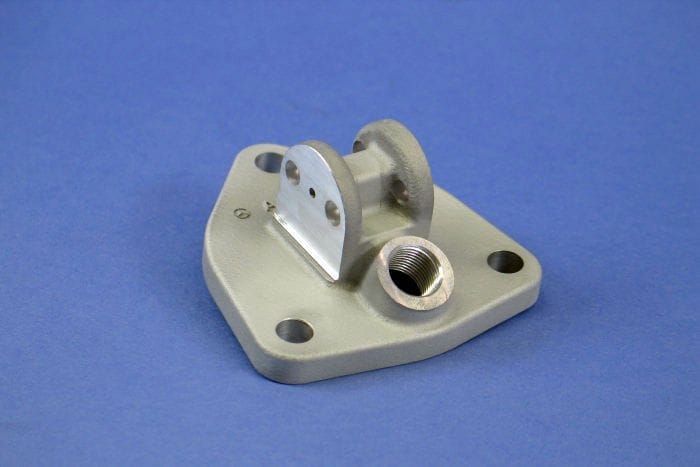![Daimler now has a highly productive metal 3D printing system for replacement parts [Source: Daimler]](https://fabbaloo.com/wp-content/uploads/2020/05/image-asset_img_5eb0981191f3e.jpg)
Daimler announced a fully automated metal 3D printing system, “NextGenAM”, and this points us to a very interesting future.
The well-known German automaker teamed with 3D printer manufacturer EOS and Premium AEROTEC to produce the system. While Fabbaloo readers have likely heard of EOS, you may not have heard of Premium AEROTEC. They are a company that produces structures for aerospace applications.
It may seem unusual for an aerospace company to team with an automotive company, but there’s gold for both at the end of this project.
Their goal was to develop a system to produce metal parts that was substantially less expensive than conventional approaches. This, they seem to have achieved with the new NextGenAM system project, which has now completed. It is said to reduce the manufacturing costs per part by some 50%.
It’s important to remember that the “3D printing” part of the manufacturing process is actually only one of many steps involved. Post-processing, quality testing, job layout, inventory tracking, thermal planning, 3D modeling, file storage and much more are involved. These, in a traditional process, are often performed by a healthy amount of expensive manual labor.
That’s definitely not the case with the NextGenAM system, which apparently is entirely automated. Daimler explains:
“The secret lies in an ingenious and scalable additive production chain, which is fully automated right through to the point where the printed parts are mechanically sawn off the build platform. This means that no manual work is now required at any stage of the process, from the data preparation and central powder supply through to the AM build process itself and including heat treatment, quality assurance and separation of the components from the build platform. The technical heart of the system is the EOS M 400-4 four-laser system for industrial 3D printing using metal materials. A driverless transport system and robots ensure the smooth movement of the parts through every stage of the production line.”
We’ve seen other 3D printer vendors begin working on this challenge, as some are developing robotic accessories to automate some of the many tasks involved in metal 3D printing operations. However, the emphasis is on “some”. Here Daimler and partners have developed a system that is entirely automated.
The implications of this are profound: here we have a kind of “black box” system that can be requested to produce many kinds of metal parts at the touch of a button — assuming the 3D models exist.
How could this be deployed to production? It seems that Daimler is most interested in using it as a unit for replacement parts, rather than mass producing new equipment parts. This is a wise decision, as the speed of production has not been improved sufficiently to rival mass production techniques.
Instead, we see a formalized low-volume production system that can be used for arbitrary metal parts on demand. I’m not sure this type of 3D printing system has been developed by anyone else, and its presence could allow an operator to potentially reduce their physical parts inventory.
The concept is called “Digital Inventory”, in which the replacement parts are held only as digital models, rather than keeping warehouses full of pre-made physical parts. In traditional manufacturing such inventories had to be made when the factory was tooled up for making them; after the production run ends, there is no way to re-tool the production line. Thus, companies had to store vast quantities of part variations in anticipation of future requests, often at great expense.
That expense could go away for companies like Daimler using this type of 3D printing system.
I have to think that as soon as this catches on with Daimler, other automotive operations will take note and be forced to implement similar technologies.
I think this could be the beginning of a rush towards advanced 3D printing technologies in the automotive industry, similar to what we’re seeing in the aerospace industry.
Via Daimler











Charles Goulding and Preeti Sulibhavi consider how two prominent automotive firms, Ferrari and Ford, are using 3D printing.